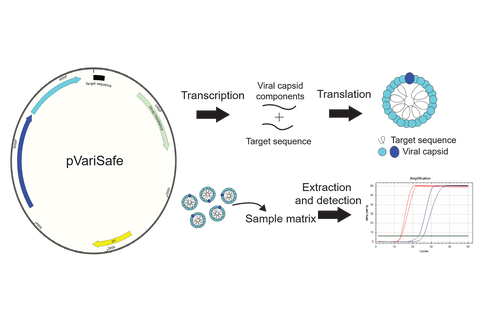Blog / Molecular Tools
Fast and Easy NGS Library Prep with Tn5 Transposase: Addressing Bottlenecks in Illumina Workflows
Next-generation sequencing (NGS) has transformed genomics research, enabling discoveries that were once unimaginable. As sequencing costs decline and instrument throughput increases, researchers can now generate more data than ever before. Yet one major bottleneck remains: library preparation.
For many labs, library prep is time-consuming, costly, and difficult to scale. As Illumina sequencers get faster, the sample preparation step often struggles to keep pace. In this post, we explore how tagmentation using engineered Tn5 transposase can simplify and accelerate library preparation—without compromising quality or flexibility.
1. Why Library Prep Still Limits NGS Throughput
Traditional NGS library preparation involves multiple discrete steps—DNA fragmentation, end repair, and adapter ligation—each requiring separate reagents, cleanup steps, and equipment.
- Physical fragmentation (e.g., sonication or acoustic shearing) offers control but requires expensive instrumentation and trained operators.
- Enzymatic fragmentation simplifies the workflow but can introduce biases or uneven fragment sizes.
As throughput demands increase, these multi-step workflows can lead to:
- Inconsistent fragment sizes that affect cluster density and coverage uniformity.
- Increased reagent costs and consumable waste per sample.
- Limited automation compatibility, creating bottlenecks in 96-well or higher-throughput pipelines.
Problem summary: Library prep must evolve to match the speed, scale, and economy of modern sequencing platforms.
2. Tagmentation: A Smarter Approach to Library Prep
Tagmentation combines fragmentation and adapter ligation in one enzymatic step, eliminating the need for separate reactions. This process leverages a natural mechanism—transposition—where enzymes called transposases cut and insert DNA sequences.
Tn5 transposase, originally discovered in E. coli, has become the foundation for modern tagmentation-based NGS workflows. When pre-loaded with adapter sequences, the enzyme simultaneously fragments target DNA and integrates the adapters required for downstream amplification and sequencing.
This single-tube workflow dramatically simplifies the process:
- Tn5 + adapters form a stable complex (“transposome”).
- Tn5 cuts and pastes adapters into target DNA.
- The resulting tagmented DNA can be directly amplified to complete the library.
Outcome: Fewer steps, shorter hands-on time, and greater consistency between samples.

3. Why Not All Tn5 Enzymes Perform Equally
While tagmentation is widely used, not all commercial Tn5 enzymes behave the same. Labs frequently encounter issues such as:
- Unpredictable fragment size distributions (outside Illumina’s optimal 200–500 bp range).
-
Batch variability impacting reproducibility.
- Reduced activity after multiple freeze–thaw cycles, leading to wasted reactions.
- High reagent cost per library when using proprietary kits
Illumina’s Nextera kits, for example, deliver reliable results but come with high per-sample costs and limited flexibility for workflow optimization.

4. Engineering a More Robust Tn5: The SwifTag™ Solution
At Varizymes, we have leveraged more than two centuries of combined enzyme engineering experience to create SwifTag™ Tn5 2.0 Transposase—a hyperactive, highly stable version of the enzyme optimized for Illumina-compatible library prep.
Key enhancements include:
- Improved transposition efficiency for robust fragmentation within the 200–600 bp size range ideal for short-read sequencing.
- Enhanced thermal and storage stability, maintaining full activity over multiple freeze–thaw cycles.
-
Proprietary large-scale production methods, enabling consistent quality and substantial cost savings.
Solution summary: SwifTag™ Tn5 2.0 delivers faster prep, greater reliability, and lower costs—without changing existing Illumina-compatible workflows.
5. Designed for Researchers and Core Labs Alike
SwifTag™ Tn5 2.0 Transposase is fully compatible with existing Illumina workflows and standard adapter designs. Researchers can drop it directly into established tagmentation or “homebrew” protocols while gaining:
-
Flexibility: Customize adapter sequences or reaction conditions without vendor lock-in.
-
Scalability: Ideal for automation on liquid-handling systems.
-
Reliability: Manufactured under stringent QC with batch-to-batch reproducibility.
-
Affordability: Provides significant savings compared to major commercial suppliers.
Labs currently using Illumina or NEB transposases have adopted SwifTag™ Tn5 2.0 to achieve both performance and budgetary advantages.

6. The Broader Impact: Streamlined Sequencing from Sample to Data
As NGS applications expand—from single-cell studies to clinical diagnostics—workflow reliability and cost-effectiveness have never been more critical. SwifTag™ Tn5 2.0 enables faster turnaround, improved consistency, and reduced reagent costs, empowering both research and production-scale sequencing environments.
Whether you’re:
- A core facility managing hundreds of sequencing projects,
- A diagnostics company building scalable, regulated assays, or
- An academic lab developing low-input or specialized workflows
SwifTag™ Tn5 2.0 helps bridge the gap between sequencing power and prep efficiency.
6. Conclusion
Library preparation should no longer be the rate-limiting step in next-generation sequencing. By integrating fragmentation and adapter ligation into a single, efficient reaction, engineered Tn5 enzymes like SwifTag™ Tn5 2.0 Transposase deliver simplicity, reproducibility, and cost savings.
With proven Illumina compatibility and robust enzyme stability, SwifTag™ Tn5 2.0 provides a drop-in solution that helps scientists focus on results—not on reagent costs or workflow complexity.






